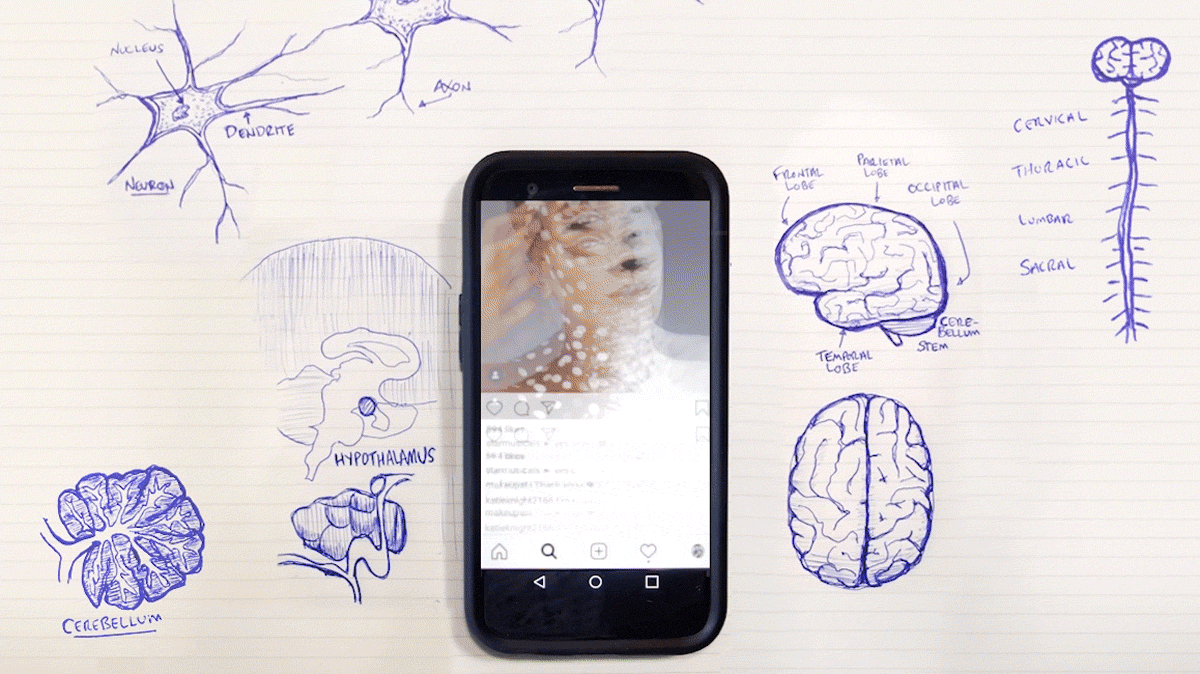
Many teens spend a lot of time on their phones, on their screens. So what's happening in their brains as they do that? Is it hurting them?
I asked a group of teens what their questions were about phones and how the devices affect them. They all attend Alameda International Junior/Senior High, a public school in a mostly Latino neighborhood in Lakewood; we’re only using first names to protect their privacy.
The teens had a lot of questions.
So I asked Dr. Joel Stoddard, a child and adolescent psychiatrist at Children’s Hospital Colorado, to come in and answer them.
Here's what the teens wanted to know, followed by the answers.
Luis, 9th grader“What do you think triggers in the brain that makes the adolescent want to be on his phone, always?”
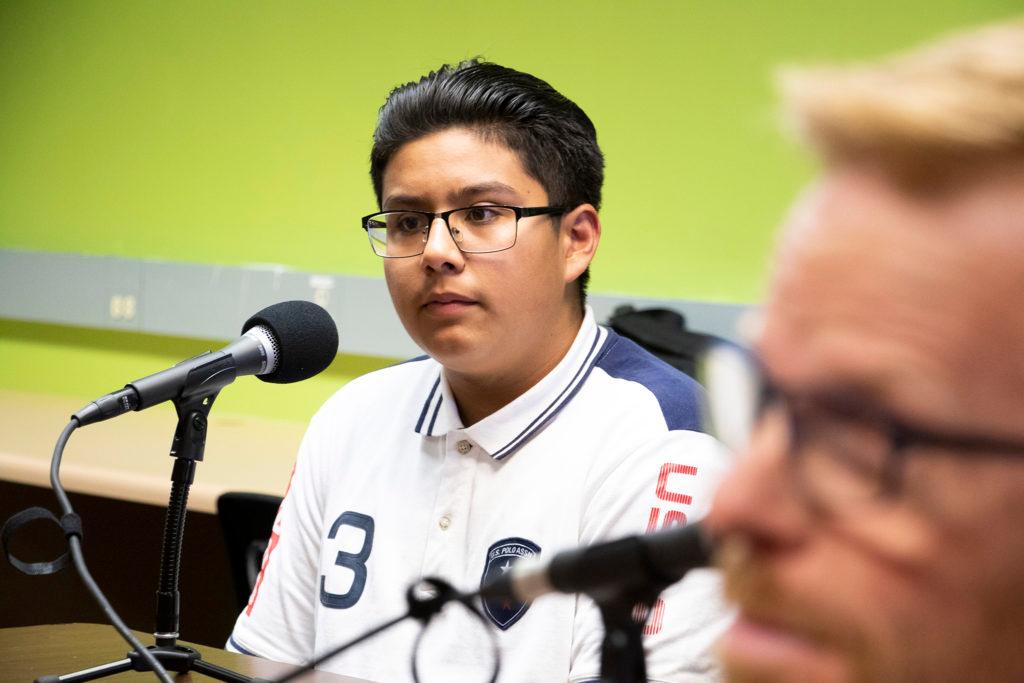
Teens’ brains are excitable, Stoddard said. They have sensitive reward centers, including in a part of the brain called the nucleus accumbens. Social media lights those up. “When you get a like, your reward centers are really active,” Stoddard said. He pointed to research that shows “those rewards centers develop much earlier” than the centers that might help a teenager, say, moderate their desire for likes, or set and meet goals.
“There's a big difference between our reward centers, going after what we want, and our control centers in adolescence,” he said. “And that's why it seems like adolescents, it seems I'll say, adolescents are more vulnerable than other folks.”
For teens and adults, the problem stems from the fact that the brain doesn’t distinguish between social media and the physical world. There’s no separate brain system for social media. “So we respond to social media and what we like just like any other thing in the real world,” said Stoddard.
And social media offers unnaturally quicker and more consistent rewards than humans get from many other activities.
The students said that seems about right, nodding their heads. Brooklyn, a brown-haired 8th grader with glasses, said she’s experienced that after posting on Instagram. “You get all excited about it,” she said. “Once you're on Instagram, some people get sad, because they see other people with a lot of likes, unlike them.” Jenasey, a senior in a light-colored sweatshirt, shared a similar experience. “Your adrenaline just gets sky-high and you’re just in the best mood,” she said.
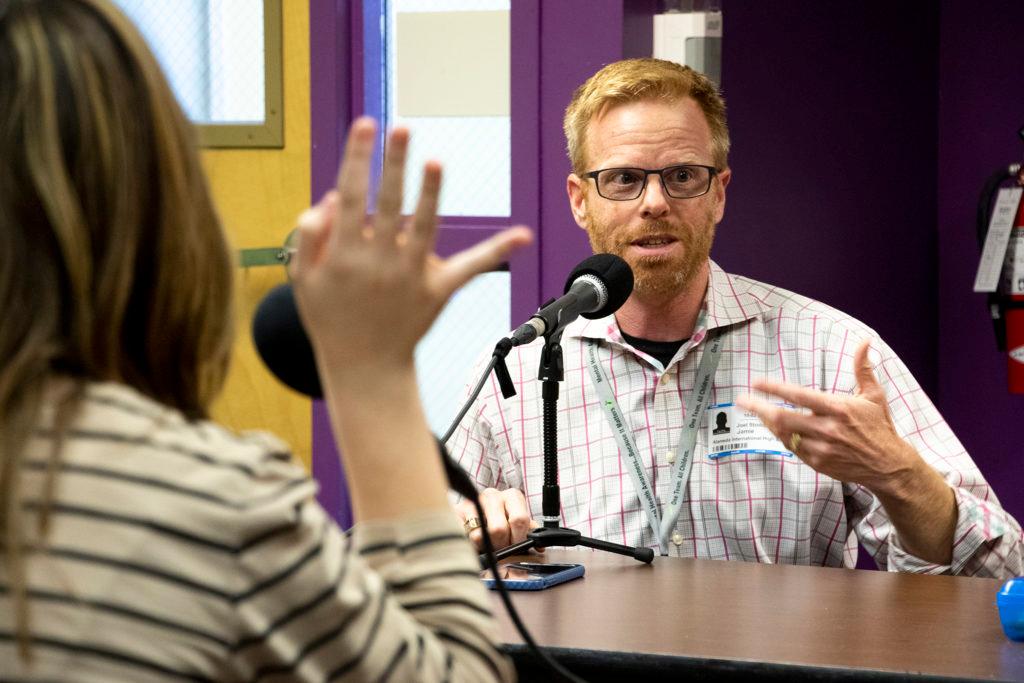
Stoddard said teens’ desire for social interaction might also feed their stress about phones. They are especially tuned in to their peers’ reaction, so likes on Instagram feel to a teen like a sign they belong. But the opposite is true too: They’re extra sensitive to rejection and exclusion. “To expect someone and to hope someone will like what you post and then not to get that reaction feels like a punishment,” he said.
Even thinking about posting can raise anxiety for some people, Stoddard said. “It's not just the likes, it's sort of the anticipating what other people are thinking about you on social media.”
Stoddard said that’s especially true for those with social anxiety or fears of being judged in a social situation. People who are vulnerable to that kind of worry in the real world “were very much more likely to have a strong gut reaction to worrying about what other people thought about their posts online.”
Brooklyn said she’s seen that among her friends. “I know my friend is scared to post some things because she's scared about what other people will think and what other people will think about her,” she said.
Jovan, 8th grader“How does (phone use) really affect the brain? When people explain it, they mostly say it's very dangerous.”
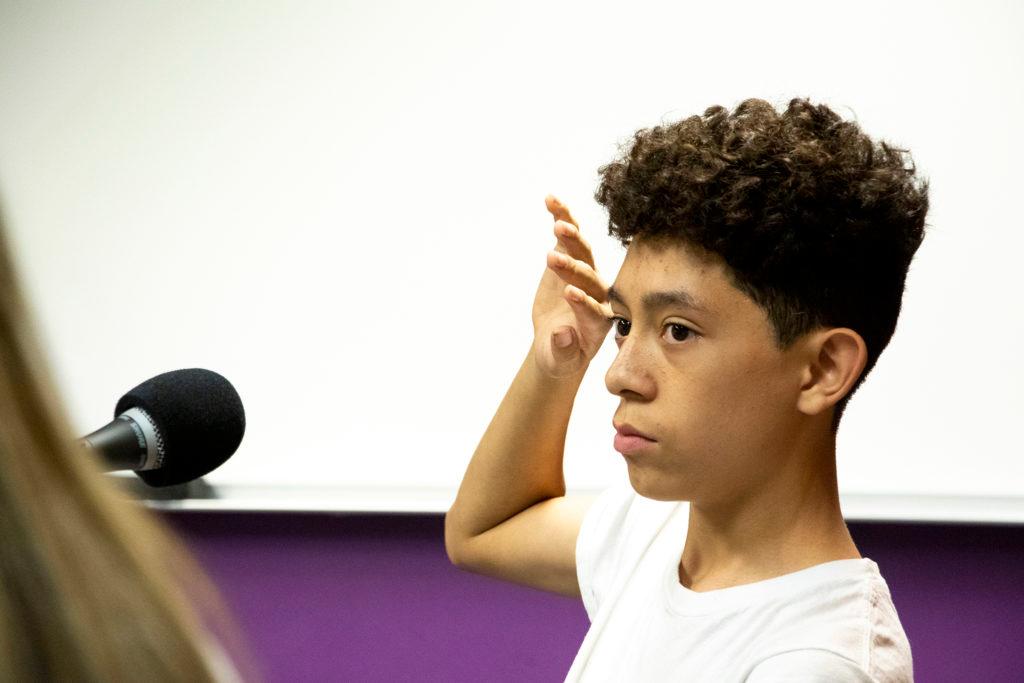
Stoddard acknowledged it’s hard to know the long-term impacts. “We're making ourselves guinea pigs in a big social experiment right now,” he said. Still, all the things teens can access via their phones and social media can put them in a really fraught situation. Stoddard used an analogy to explain. He showed the students an image, with a match on the left and a gas can on the right. “A match by itself, is that harmful?” he asked. David, an 8th grader, replied: “It can be.”
Stoddard told them a match or gas can by itself doesn’t cause any problems. “But if you light a match and then put it by the gas can, something bad can happen, right?” he said.
It’s like that with young people and phones, he explained. For some teens the phone can lead to trouble, in different ways for different people. For some, it’s connecting with apps or people online in an unhealthy way or becoming completely absorbed in virtual life. Jovan, a curly-haired 8th-grader in a white T-shirt, said that’s what happened to him. He plays video games, especially Fortnite, late into the night. “On the weekends I would be on it like every day,” he said. During the week, “I like would go home and go straight in my room and then just play until 10.”
It got so extreme he even skipped meals to play video games.
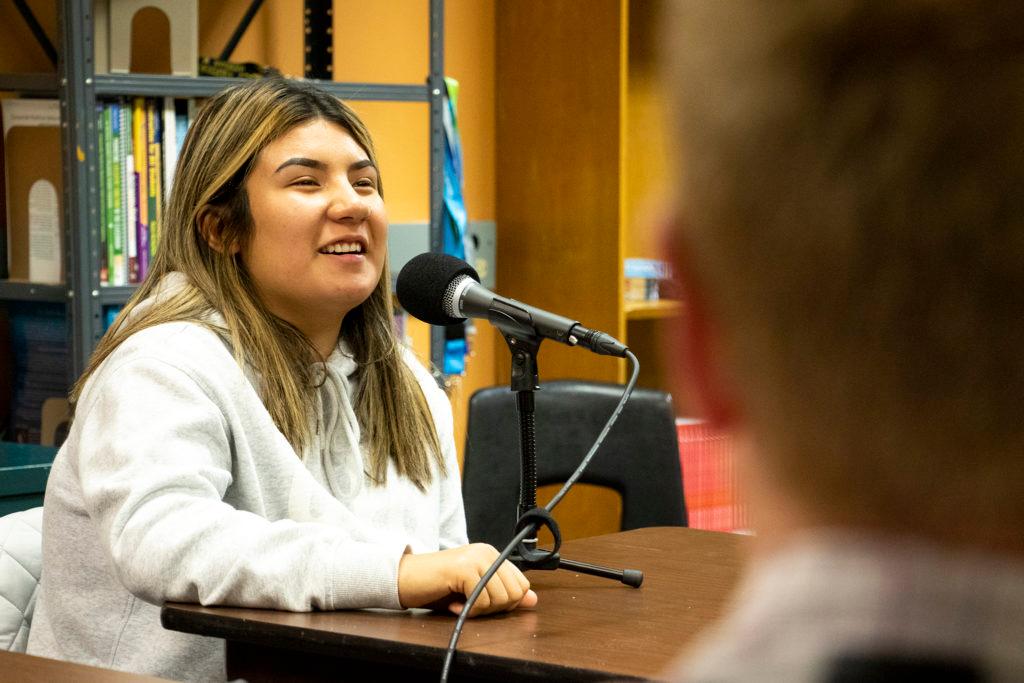
Jenasey, the senior, said every waking hour, except when she’s at work, she’s on social media. “My conversations with people are the social stuff I see on social media,” Jenasey said. “Like, the memes, the jokes, it becomes your life, literally.”
When I asked if their screen time worries them, every teen raised their hand.
A new study released this week by Common Sense Media, which examines young people’s tech use, found on average 8-to-12-year-olds in the U.S. used their screens 4 hours 44 minutes a day. For teens, it’s even more: an average of 7 hours 22 minutes. Both figures don’t include time on screens for school or homework.
The report documented other trends. Even among the youngest tweens, smartphone ownership has risen sharply. Watching TV and playing video games were the top activities, and time spent watching videos, often on YouTube, rose significantly since 2015.
Pew Research Center research reported a growing share of teens say they use the internet “almost constantly.”
It’s hard to say right now what the long-term impacts of all that use will be. The research on the long-term impacts of phones is still evolving. High phone usage is linked to higher rates of mental health troubles, but researchers disagree on whether smartphones are actually the cause.
If you need help, dial 988 to reach the Suicide and Crisis Lifeline. You can also reach the Colorado Crisis Services hotline at 1-844-493-8255 or text “TALK” to 38255 to speak with a trained counselor or professional. Counselors are also available at walk-in locations or online to chat.
A recent NPR piece by reporter Anya Kamentz summarized the competing scientific theories:
Julia Twenge, an author and professor of psychology at San Diego State, argued smartphones are dangerous for teens, based on her research. Twenge told NPR that today’s teens and young adults are the first smartphone generation. With so much of their time on phones and social media, they’re spending much less time doing other activities and that may be why they’re wrestling with rising levels of mental health problems including depression and anxiety.
But skeptics of that argument say available evidence can’t back that up. “There is little clear-cut evidence that screen time decreases adolescent well-being,” write researchers Amy Orben and Andy Przybylski in the journal “Psychological Science.” "A teenager’s technology use can only explain less than 1% of variation in well-being," Orben, an Oxford University psychologist, told NPR. "It's so small that it's surpassed by whether a teenager wears glasses to school," or rides a bicycle, or eats potatoes."
In a 2019 piece entitled “How Much Is Too Much?” published in the Journal of the American Academy of Child and Adolescent Psychiatry, the pair analyzed US Census Bureau data from 2016-17. They conclude “the possible influence of digital screen engagement is likely smaller and more nuanced” than expected.
Still others argue that some effects are likely, but shy away from the more drastic conclusions. The impact of a “media-saturated world” on the current generation of adolescents is “unclear,” according to research published by a pair of Dutch psychology professors Eveline Crone and Elly Konijn in the journal Nature Communications. Their analysis, which Stoddard finds persuasive, is that key neural systems in the brain are “still underdeveloped” and changing. That may contribute to “sensitivity to online rejection, acceptance, peer influence, and emotion-loaded interactions in media-environments.”
Brooklyn, 8th grader“What do you think that kids should change when using their cell phones? Should they be more mindful?”
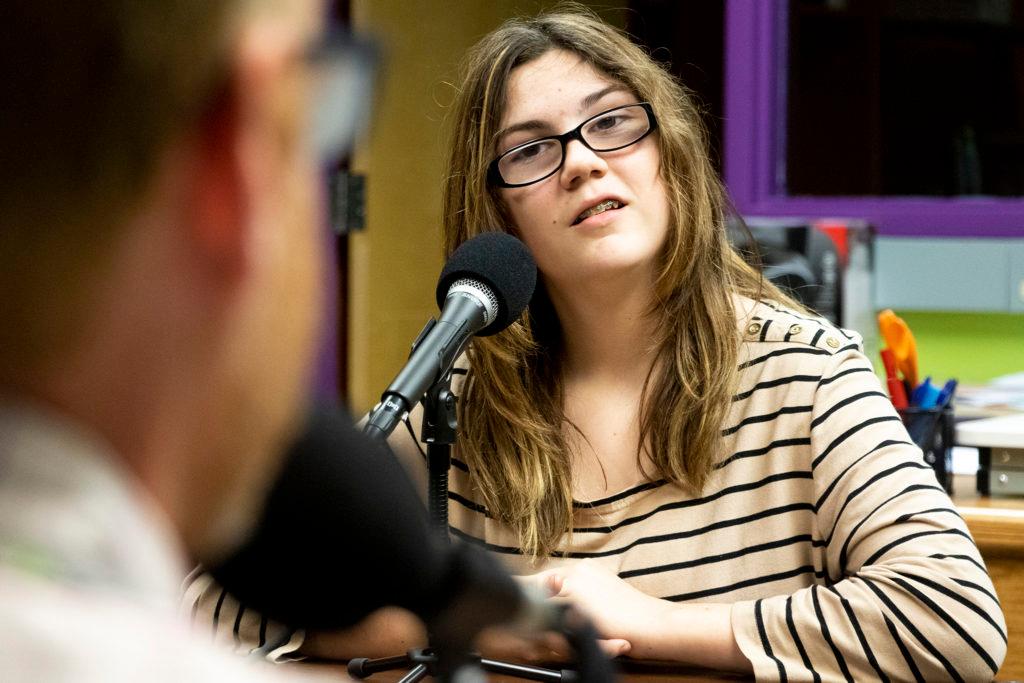
It all comes down to moderation, Stoddard said. “Everyone wants to be able to function online. It's a skill you have to learn.”
Stoddard told the students phones and social media are likely here to stay, so the key is corralling them to prevent problems and getting help when teens recognize they have a problem. “Figuring out how to manage your emotions around social media and let you control social media instead of letting it control you is a real trick in adolescence,” he said.
He told them research shows heavy use “like over five hours a day can certainly cause problems for some people, or a lot of people.” But he said for young people to be totally excluded from friend groups can lead to social isolation. Stoddard recommended keeping use to a minimum, perhaps an hour or so a day. The students seemed skeptical. “That's kind of a hard target for a lot of adolescents, frankly,” Stoddard acknowledged.
His bottom line for teens: To keep it healthy, keep it limited and positive.
We want to know more, and we hope you do, too.
CPR News will spend the next few months investigating the factors that have created the ultimate pressure cooker for some teens. We’ll go into their world through audio diaries, interviews, reflection and analysis. Most importantly, we’ll examine what teens, families and schools can do to let some of the pressure loose.
_









